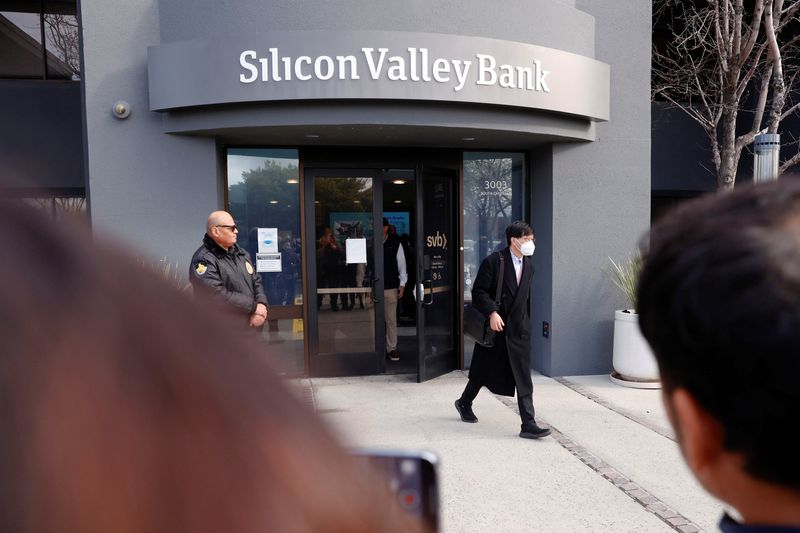By Pete Schroeder
WASHINGTON (Reuters) -The leadership of Silicon Valley Bank and its government supervisors failed to quickly recognize risks looming in the firm before its March failure, according to a report from the U.S. Federal Reserve’s inspector general.
The report issued on Thursday echoed similar dissections of the sudden collapse, finding that the bank did not manage risks as it rapidly grew and that examiners struggled to adequately police a bank that was quickly becoming one of the biggest in the country.
Specifically, the IG said Fed examiners struggled to transition from monitoring the bank as a smaller regional firm to stricter oversight as it rapidly grew in size, applying insufficient resources and expertise to monitoring its activities.
SVB’s failure stunned regulators and bankers, as rising unrealized losses on Treasury bonds spooked depositors, leading to a sudden run on the bank, which had relied heavily on uninsured deposits.
The IG’s report found that the bank’s management and board failed to adequately manage its risk as it rapidly grew in size, and ineffectively communicated its financial moves, which helped set off the bank run.
Addressing supervisory shortcomings is a top priority for Fed Vice Chair for Supervision Michael Barr and other financial regulators in the coming months.
Thursday’s report tracks closely with a SVB post-mortem commissioned by Barr, which found in April that supervisors needed to be able to identify shortcomings quicker and compel bankers to address them.
In response to Thursday’s IG report, the Fed said it generally agreed with the findings and was already working to implement several of its recommendations.
(Reporting by Pete Schroeder; Editing by Mark Porter and Marguerita Choy)

